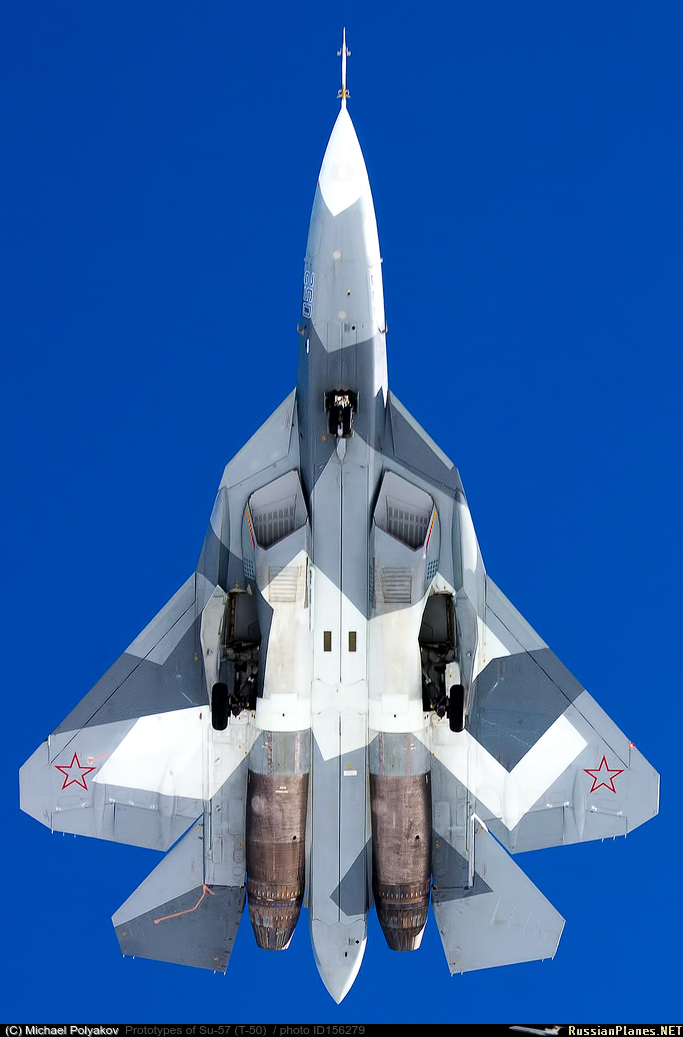This is a very pretty airplane, and the planform of the fuselage, wings and tail is just very nicely done, and I have said it before, this is the most beautiful of all the fifth gens, this picture shows that the powerplants are very closely cowled in what appears to me to be titanium, just as we note on the J-20 this section is obviously not carbon fibre and is a little less "slick" than the rest of the airplane.
Also note that the weapons bays are very narrow, and the aft bay is separated from the front bay by a very short partition? There is a reason that this aircraft is the only one with a fore and aft weapons bay, and I would suspect that is one reason we may have had structural issues with the aft fuselage, this is just the AFBs eyeball engineering.
Now this is simply my own speculation, but those weapons bays are not load bearing, and what I mean by that is that those large bays are devoid of supporting structure? those doors help that when they are closed, somewhat??
This leads me to believe that the T-50 has a larger longeron or more likely lots of larger longerons running down the top of the aircraft in order to provide the necessary rigidity to this structure to support those large bays and that this is largely dependant on the structural integrity of the carbon fiber "backbone", which is "bonded" to the carbon fibre skins to create a semi-monocoque structure.
This is all conjecture on my part and no I don't do the math, this is farmboy engineering, but let me tell you I have "broken" lots of stuff, airplanes, bicycles, cars, and I have seen a bunch of it broken,,, lets just say while I love carbon fibre, I also understand that any insult, impact, abrasion, fire, etc, may break those lovely carbon fibres, or cause them to "delaminate"?
The beauty of carbon fibre is that when you know what you are doing, you can lay in a little additional carbon fibre and resin and with-out a lot of additional weight greatly increase its strength and load bearing where it is needed...
The T-50 appears to be largely carbon fibre, which seems to be where they are hoping to reduce the RCS, not sure how that will play out in real life, but we shall no doubt see soon enough?

